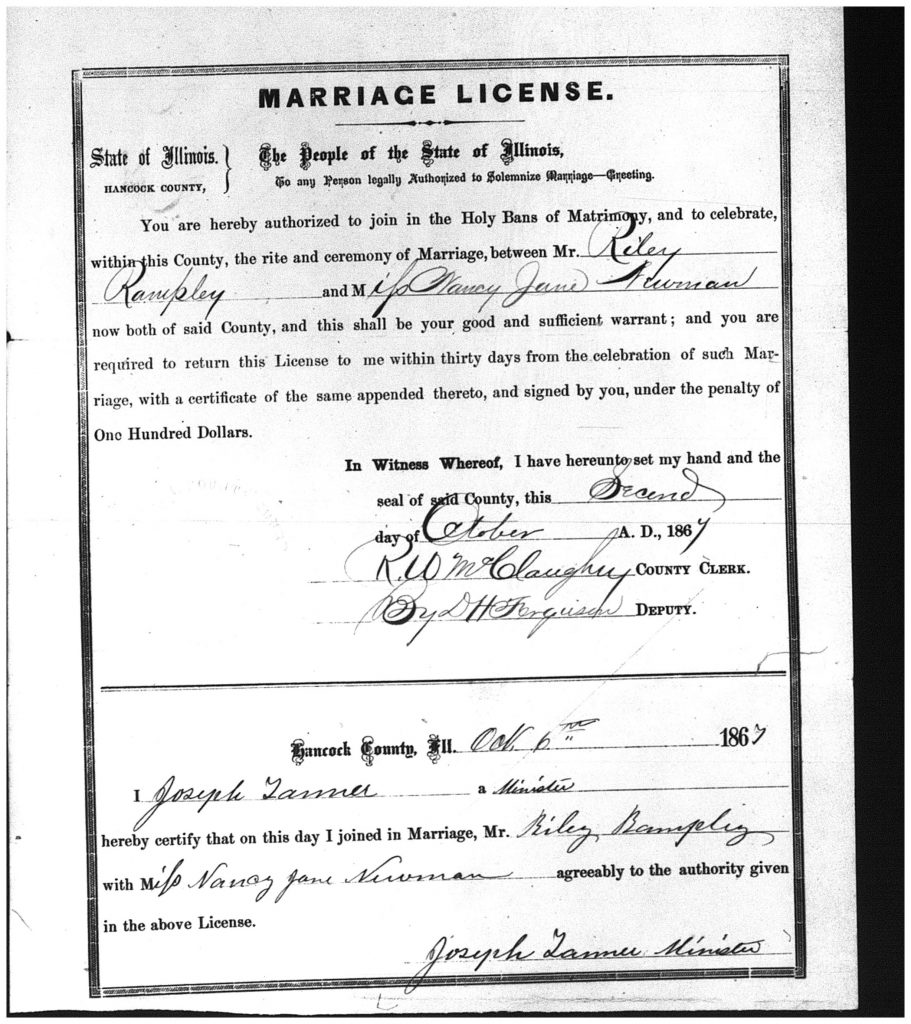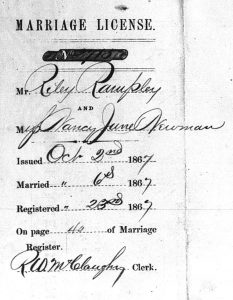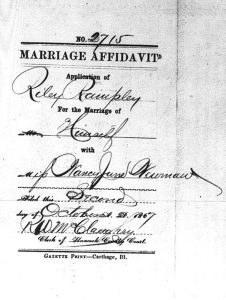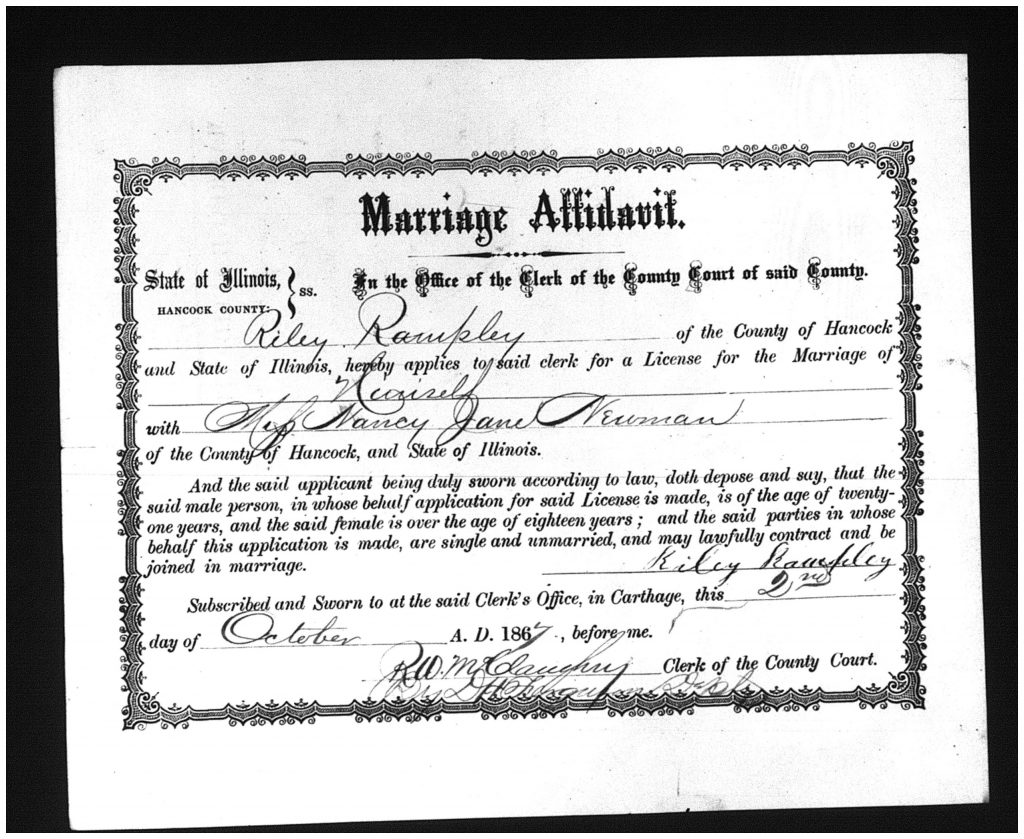Ancestry.com’s “Illinois, County Marriages, 1800-1940” indicates there are five “marriage records” for Riley Rampley and Nancy Newman in Hancock County, Illinois. Ancestry.com indicates that this database has the following source with FamilySearch being referenced as the “Original data”:
I take issue with the use of the phrase “Original data,” in this context, particularly the word “original.” I would prefer they use the word “title” for the first line in their “Source Information” and “data source” for the second line instead of “Original data.”
The five entries for Riley and Nancy have been summarized in the following chart. The first four columns are from the Ancestry.com database. Ancestry.com does indicate the FHL film from which the entries were created. That’s the fifth column shown here. The sixth column is the title of the records for the specific roll of film as pulled from the Family History Library card catalog.
| Ancestry.com data | Ancestry.com data | Ancestry.com data | Ancestry.com data | FHL film source as indicated by Ancestry.com | Film title from Family History Library catalog |
| Riley Rampley | 6 Oct 1867 | Hancock | Nancy June Newman | 1533001 | Marriage certificates no.1567-2874, 1864-1868 |
| Riley Rampley | 6 Oct 1867 | Hancock | Nancy June Newman | 1533001 | |
| Riley Rampley | 2 Oct 1867 | Hancock | Nancy June Newman | 1533001 | |
| Riley Rampley | 2 Oct 1867 | Hancock | Nancy Jane Neuman | 1533001 | |
| Riley Rampley | 1867 | Hancock | Nancy Jane Newman | 954179 | Marriage register, vol. B, 1862-1890 Marriage register, vol. B (copy), 1862-1890. |
The first four index entries were created from the documents contained in the license packet. The last one was created from the marriage register entry. From a citation standpoint and from simply “wanting to be able to know where the information was pulled” it would have been nice more detail than simply the roll number had been included. There are hundreds of marriage licenses on each roll. The same comment applies to the entry created from the marriage register.
The point of an index is to facilitate migration to the original record. That’s difficult when the index is only as specific as the roll.
The “dates” are why it’s imperative to view the actual record. 2 October was the date of the license. 6 October was the date of the actual marriage. That’s made clear by looking at the actual records.
These marriage records are currently not online, but digital scans were made from the microfilm in the course of researching this couple.
The license packet for Riley and Nancy contains two documents: an affidavit made out by Riley indicating that he and Nancy were old enough to be legally married and the returned license signed by the officiant. Affidavits were not always required in Illinois but they were at the time of this marriage. The cover of the license packet summarizes the information in the license and indicates on which page in the marriage register some of the information was recorded on 23 October–when the license was returned by the officiant. A copy of the information from was not made.
The reverse side of the affidavit really does not provide any additional information beyond what is contained in the actual affidavit other than to indicate the date on which it was filed.
The actual affidavit does contain Riley’s signature. No specific ages are given as what is key is that the bride and groom are of legal age and are unmarried. That’s what really matters
The returned license provides the name and signature of the officiant, but (as typical for the time) does not indicate the specific location of the marriage within the county.

The index entries in the Ancestry.com database should be used as a guide. FamilySearch created separate entries to indicate that there were several references to the marriage in the actual records. The dates of “marriage” as given in this marriage index (and several others which originated at FamilySearch) may not be actual dates of marriage at all, but could be dates of license issue, bonds, or other records created as a part of the “getting ready to get married process.”
As always, look at the original. Indexes are meant to be finding aids. And when Ancestry.com indicates that FamilySearch is the “original source,” the database is probably available for free on the FamilySearch site.





No responses yet